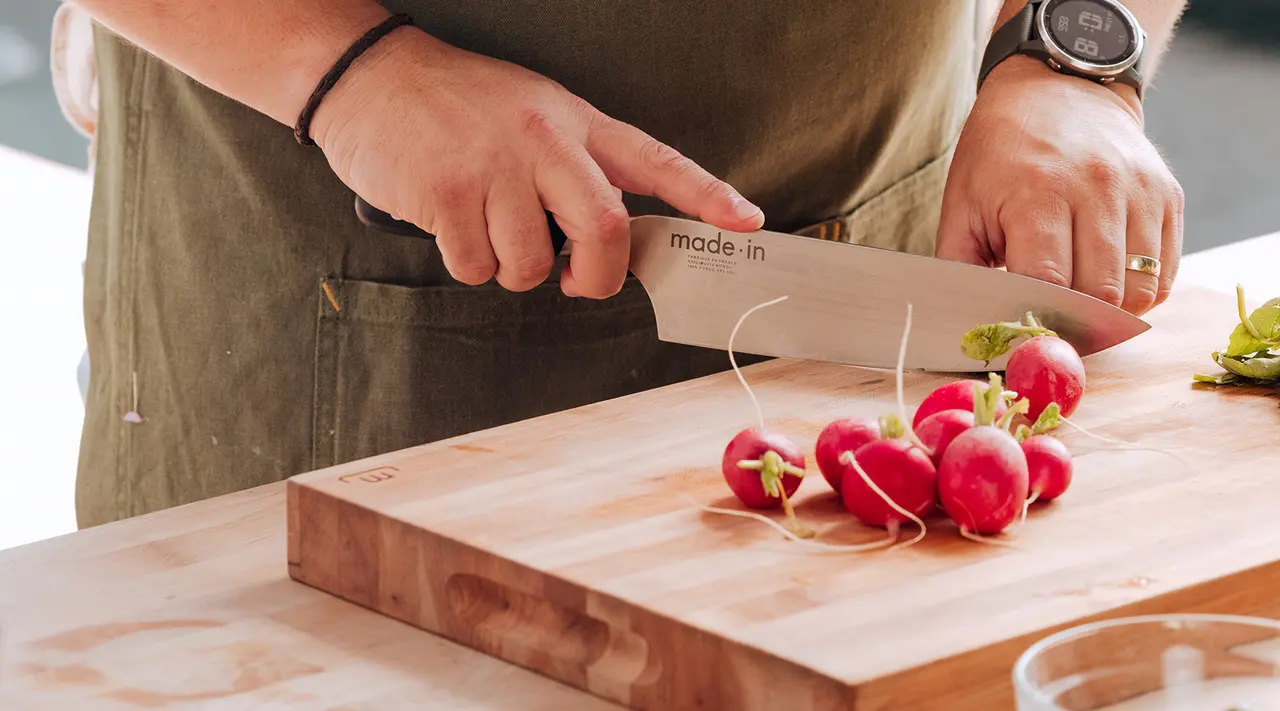For culinary professionals, a Japanese knife is not merely a tool; it's an embodiment of their cooking passion. Renowned for their exceptional sharpness and precision, these knives can be vital in the kitchen. However, even the most cautious chefs may encounter the frustrating issue of chipping. How can you restore such a valuable instrument? In this detailed guide, we will explore the effective methods to bring your knife back to pristine condition.

Understanding the Structure of a Japanese Knife
Before we delve into the repair process, it's essential to comprehend what differentiates Japanese knives from others. Famous for their distinct design, these knives typically utilize high-carbon steel, which gives them their exceptional sharpness but also makes them more prone to chipping compared to Western knives. Familiarity with the material and design of your knife is key to effective repairs.
Reasons Why Knives Chip
Knives can chip for various reasonsranging from improper usage to accidental falls. Using a knife on hard surfaces, such as glass or stone, can cause chipping, as can cutting through materials best suited for sturdier knives, like bones. Additionally, improper storage can lead to unintentional damage.
Assessing the Severity of the Chip
Before beginning any repair, it's crucial to determine the extent of the chip. Minor chips can often be remedied with a sharpening stone, while deeper issues may necessitate the removal of a significant amount of metal. Assess the damage by gently running your finger over the blade to gauge its severity and select the appropriate repair approach.
Step-by-Step Procedure to Repair a Chipped Japanese Knife
Preparing Your Workspace and Tools
First, gather your essential tools: a whetstone, a towel, and possibly a knife sharpening guide if you're new to this. Ensure that your workspace is clean and stable.
Repairing Minor Chips with a Whetstone
If the chip is small, you can generally grind it down using a whetstone. Soak your whetstone in water for approximately 15 minutes. Securely hold the knife and glide it over the stone, beginning with the coarse side if the chip is significant, applying even pressure. Continue this process until you notice the chip beginning to fade.
Reshaping the Knife's Edge
After eliminating the chip, the knife edge may require further sharpening. Flip the stone to the finer grit side, and carefully sharpen the edge while maintaining the original angle of your Japanese knife. This practice ensures your knife retains its cutting performance.
Utilizing Advanced Techniques for Severe Chips
For deeper chips, it may be necessary to seek professional restoration or use advanced tools like a belt sander. Consulting an expert can help prevent additional damage.
If youre looking to expand your knowledge about sharpening techniques, consider these expert resources for guidance.
Final Touches
Once you have repaired the chip and re-sharpened the knife, make sure to clean it thoroughly to remove any leftover metal particles. Allow it to air-dry and store it in a protective sheath to prevent future damage.
Caring for Your Knife
Maintaining your Japanese knife is crucial for its durability and performance. Regular honing and appropriate usage will keep it in optimal condition. Storing it on a magnetic strip or in a padded knife roll can help prevent future chips.
For additional tips on knife storage, check out this guide.
:max_bytes(150000):strip_icc()/Food_Wine_MacKnifeProfessionalHollowEdgeKnife_007_DB_1-7360469a1744467b854927993b62f301.jpg)
Frequently Asked Questions
How often should I sharpen my Japanese knife?
Its commonly advised to sharpen your Japanese knife every few months or as necessary, based on usage.
Can I use a sharpening machine for a chipped Japanese knife?
While some people opt for machines, they can often remove too much metal too quickly. A whetstone tends to provide better control and is generally preferred for precision instruments.
How can I prevent my Japanese knife from chipping?
Appropriate usage, regular maintenance, and safe storage are essential in preventing chipping. Be mindful of using the knife on suitable surfaces and materials.
This article contains affiliate links. We may earn a commission at no extra cost to you.


























